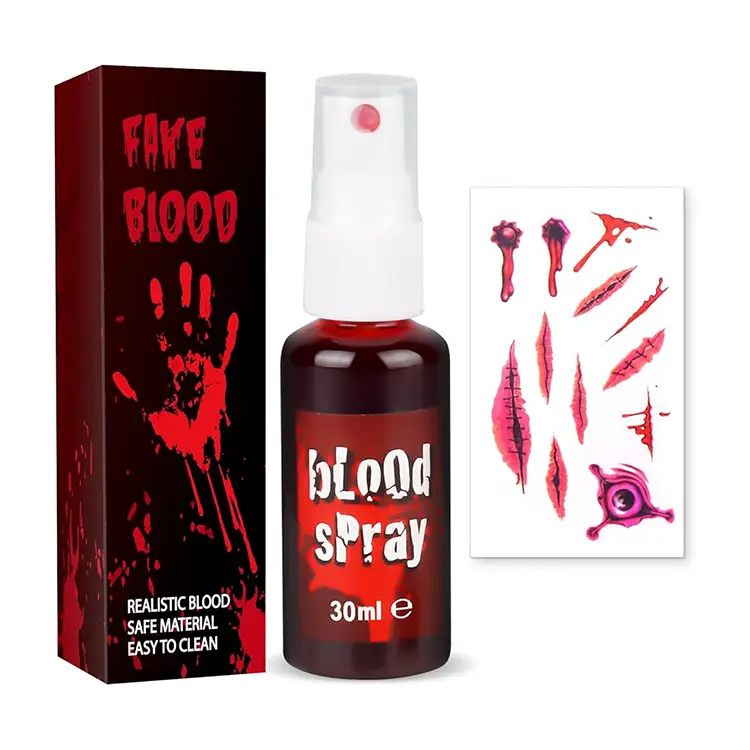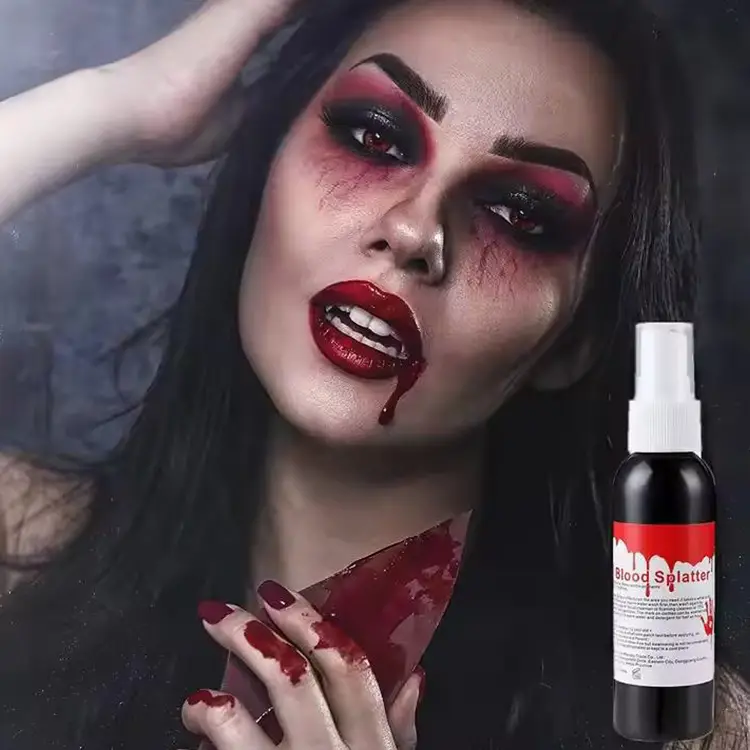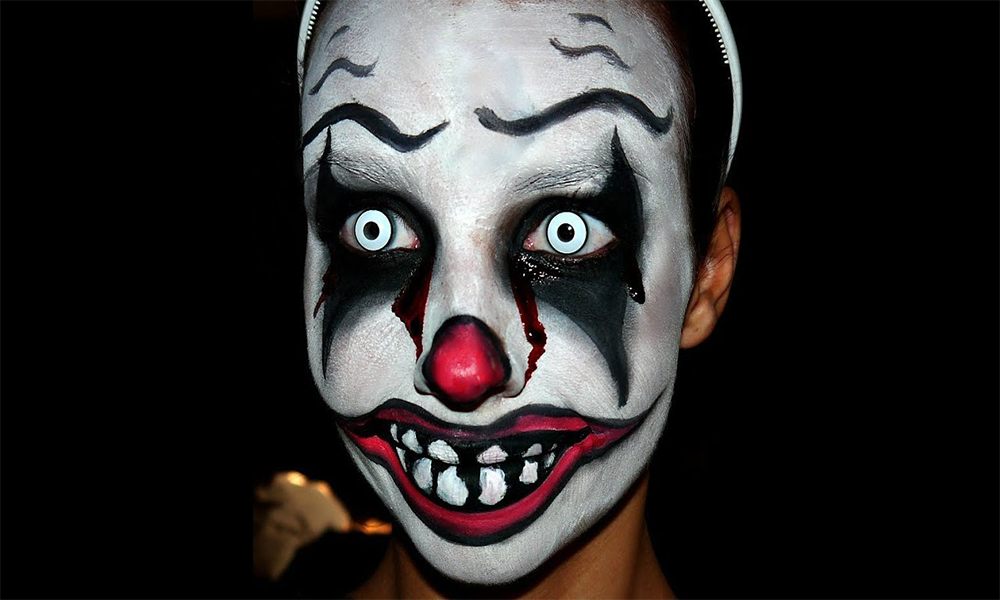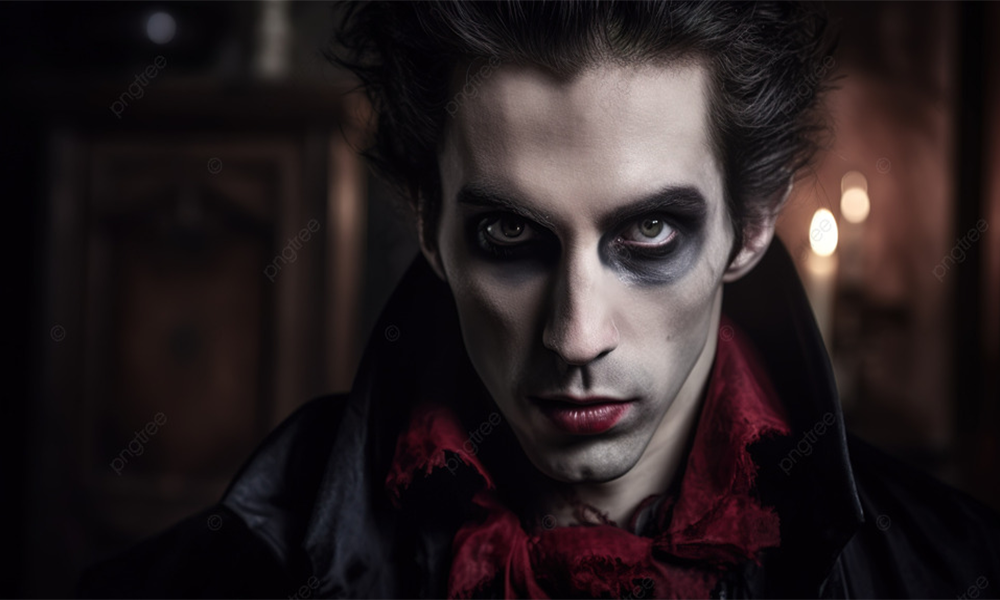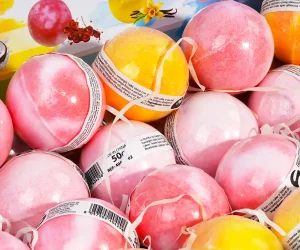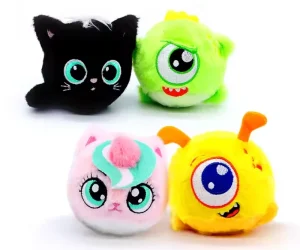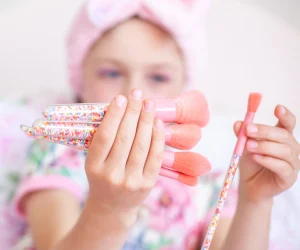What Do They Use for Fake Blood in Horror Movies?
Table of Contents
From slasher films to zombie epics, fake blood instantly signals danger or injury. Its visual impact is powerful—just a splash can heighten tension or evoke fear. Audiences often remember a scene for its striking blood effects.
Fake blood also allows directors to tell stories realistically without exposing actors to actual harm. Its color, texture, and movement are carefully calibrated to look convincing on camera.
Common Ingredients in Movie-Grade Fake Blood
Movie fake blood is carefully formulated to look realistic, flow naturally, and remain safe for actors. Understanding its composition helps reveal the science behind cinematic gore.
Water-Based Formulas
Many on-set blood effects use water as the main ingredient. Water ensures the blood flows like real blood and is easy to clean from skin, clothing, and sets. Water-based blood is often thickened slightly to mimic viscosity.
This type is versatile for splashes, drips, or thin streaks and can be colored using safe dyes. It’s ideal for scenes requiring close-up shots or prolonged contact with actors’ skin.
Glycerin, Syrups, and Food Coloring
Glycerin and corn syrup are common for creating thicker, glossy fake blood. They give a sticky, realistic texture that moves convincingly on camera. Food coloring provides the rich red tone, and small amounts of brown or blue may be added for depth.
These ingredients are carefully measured to prevent staining, irritation, or unwanted taste if accidental contact with the mouth occurs. They allow filmmakers to balance realism with safety.
Special Effects Additives
Additional additives, like thickeners or glitter in fantasy or horror hybrids, help achieve unique visual effects. Some formulas include preservatives for longer shoots or anti-clumping agents to maintain smooth flow.
For close-up scenes, cosmetic-grade versions may be used. These prioritize skin safety while maintaining the vibrant, dynamic appearance audiences expect in horror films.
Types of Fake Blood Used On Screen
Filmmakers use different types of fake blood depending on the scene, camera angle, and effect required. Each type balances realism, safety, and practical use on set.
Thick vs. Thin Blood for Different Scenes
Thick fake blood is used for wounds, gory effects, or slow-motion shots. Its viscosity allows it to stay in place and create a dramatic, textured look. Thin blood flows quickly and is ideal for dripping, splattering, or realistic bleeding scenes.
Directors and makeup artists choose viscosity based on lighting, camera distance, and actor movement to ensure the blood appears lifelike on screen. Adjustments can be made with water or thickeners to get the perfect consistency.
Stage Blood vs. Camera-Ready Blood
Stage blood is typically brighter and slightly exaggerated to read from a distance under theater lights. Camera-ready blood, used in films, is designed to look realistic on high-definition cameras, often with more subtle color variations and reflective properties.
For close-ups, cosmetic-grade or edible-safe formulations may be used to protect actors, especially in scenes involving the mouth or skin contact. This distinction ensures safety while maintaining cinematic realism.
Safe Cosmetic-Grade Options for Close-Up Shots
Close-up shots in horror films often require fake blood to touch actors’ skin or even lips. Cosmetic-grade formulas ensure safety without sacrificing realism.
Mouth-Safe and Skin-Safe Formulas
For scenes involving the mouth, lips, or prolonged skin contact, filmmakers use specially tested, non-toxic blood. These formulas often contain edible dyes, glycerin, and water-based thickeners to mimic real blood safely.
Actors can perform stunts or deliver lines without risk of irritation, staining, or accidental ingestion. These cosmetic-grade products are designed to meet safety standards while still looking convincingly gruesome on camera.
Avoiding Irritation During Long Shoots
Long filming days increase the risk of skin reactions if standard fake blood is used. Cosmetic-grade blood reduces allergens and harsh chemicals, making it suitable for repeated application.
Makeup artists also layer protective barriers like skin-safe gels or sealers under the blood to minimize absorption, ensuring that even dramatic horror effects remain safe for actors and crew.
Techniques for Realistic Blood Effects
Creating believable blood effects on screen involves more than just mixing ingredients. Filmmakers combine chemistry, artistry, and practical tricks to achieve lifelike gore.
Spraying, Splattering, and Dripping Effects
Blood can be applied using airbrushes, squirt bottles, or hand-held devices to mimic realistic flows. Sprays create mist or fine droplets, splattering produces chaotic, violent effects, and dripping mimics slow bleeding from wounds.
Each method is chosen based on the scene’s intensity and camera angle. For example, high-speed cameras often require thicker blood that holds texture mid-air without spreading too quickly.
Combining Blood with Makeup and Prosthetics
Makeup artists often integrate fake blood with prosthetic wounds, scars, or gashes. This combination enhances realism, making injuries appear deep and dynamic rather than flat.
Layering techniques, such as applying base colors, then gel-like blood, and finishing with glossy highlights, create depth. This approach ensures that horror effects remain believable even in extreme close-ups.
Innovations in Fake Blood for Modern Horror
Modern horror films blend chemistry and technology to create more realistic, safer, and versatile blood effects. Innovations allow filmmakers to achieve complex scenes with minimal risk.
Edible and Biodegradable Ingredients
Some movie productions now use edible or biodegradable fake blood to reduce environmental impact and increase actor safety. These formulas are made from food-grade dyes, syrups, and natural thickeners, ensuring they are non-toxic and easy to clean.
Biodegradable blood is particularly useful for outdoor shoots or scenes with large amounts of splatter, minimizing pollution and facilitating quick cleanup after filming.
Digital Enhancements vs. Practical Effects
While practical effects remain essential, visual effects (VFX) software can enhance or supplement fake blood. Digital tools can add splatter, adjust color, or simulate flowing patterns that are difficult to achieve practically.
Combining practical blood with subtle digital enhancements allows filmmakers to maintain realism while reducing safety risks, especially in close-up or extreme gore scenes.
Challenges and Safety Concerns on Set
Using fake blood on set requires careful planning. While it looks realistic, improper handling can cause injuries, stains, or allergic reactions.
Allergic Reactions and Staining
Some actors may be sensitive to dyes, glycerin, or preservatives in fake blood. Reactions can include skin irritation, redness, or itching. Makeup artists test small patches first and use hypoallergenic alternatives when needed.
Staining is another concern. Blood can ruin costumes, props, and sets if not applied carefully. Protective barriers and color-safe formulas help minimize damage.
Cleaning and Waste Management
Fake blood, especially thick or syrup-based types, can create slippery surfaces and messy cleanup. Production teams must plan for proper disposal and cleaning to maintain safety on set.
Biodegradable or water-based formulas reduce environmental impact and make post-shoot cleanup more efficient. Clear protocols ensure both crew safety and filming continuity.
Historical Evolution of Fake Blood Formulas
The evolution of fake blood in cinema shows a shift from risky early practices to safe, realistic formulas used today. It reflects both technological and safety advances in filmmaking.
Early Cinema and Animal Blood
In the early 1900s, filmmakers sometimes used animal blood or mixtures of corn syrup and food coloring. These were effective visually but posed hygiene and safety issues. Actors risked exposure to pathogens, and cleanup was difficult.
Blood color and flow were inconsistent, leading directors to experiment with different liquids to get a realistic appearance. Despite the risks, these early methods set the foundation for cinematic gore.
Transition to Synthetic and Non-Toxic Alternatives
By the mid-20th century, synthetic, non-toxic formulations replaced animal blood in most productions. Ingredients like glycerin, corn syrup, and food-grade dyes allowed safer, controllable effects.
Modern formulas can mimic viscosity, shine, and color depth precisely. They are designed for skin safety, even for mouth contact, and are compatible with prosthetics and digital effects, showing how the art of fake blood continues to evolve.
Cultural Impact of Fake Blood in Horror Films
Fake blood is more than a special effect; it shapes audience perception, heightens tension, and defines horror as a genre. Its visual language evokes fear, shock, and excitement.
Iconic Scenes and Audience Reactions
Viewers associate red, flowing blood with injury, danger, or death. Effective fake blood taps into instinctual responses, making horror scenes more immersive. Over time, audiences have come to expect realistic blood effects in gory films.
Filmmakers carefully craft blood effects to match tone and style, from subtle drips in suspense films to dramatic sprays in slasher movies. The realism influences emotional engagement and memorability.
How Fake Blood Shapes Horror Storytelling
Fake blood has become iconic in horror culture, influencing costumes, Halloween makeup, and even video games. Its cinematic portrayal sets standards for gore aesthetics, inspiring fan art and creative makeup trends.
The use of fake blood also sparks discussion about media effects, ethics in visual storytelling, and the balance between shock value and safety, showing its deep impact beyond the screen.
Conclusion
Fake blood in horror movies blends chemistry, artistry, and safety. From early animal blood to modern cosmetic-grade and digital-enhanced formulas, it creates realistic gore while protecting actors. Its evolution reflects both technological innovation and cultural impact, shaping how audiences experience fear on screen.
FAQ
Movie fake blood typically contains water, glycerin or corn syrup for thickness, food-grade dyes for color, and sometimes thickeners or preservatives. Cosmetic-grade formulas may also include edible ingredients to ensure safety during close-up or mouth-contact scenes. The mixture is designed to mimic the viscosity, shine, and color variations of real blood.
Ingesting standard movie fake blood is not recommended. Only cosmetic-grade or edible-safe formulas are suitable for mouth contact. Even then, ingestion should be minimal, and actors should rinse their mouths after use to prevent stomach upset or allergic reactions. Safety protocols are strictly followed on set.
Filmmakers adjust viscosity, color, and shine to mimic real blood. They use layering techniques, spray or drip methods, and combine prosthetics with blood. High-definition cameras may reveal imperfections, so formulas are fine-tuned with glycerin, syrups, and dyes to maintain a lifelike appearance under lighting and close-ups.
Stage blood is brighter and slightly exaggerated to read from a distance under theater lighting. Movie blood is designed for camera, often with subtle color variations and gloss to appear realistic in close-ups. Cosmetic-grade formulations are used for scenes involving skin or mouth contact, ensuring safety without sacrificing visual impact.
Early cinema used animal blood or basic food coloring mixes, which posed hygiene and safety issues. Modern fake blood uses synthetic, non-toxic, and sometimes edible ingredients. Innovations include biodegradable formulas, digital enhancements, and advanced pigments, balancing realism, actor safety, and environmental considerations.

